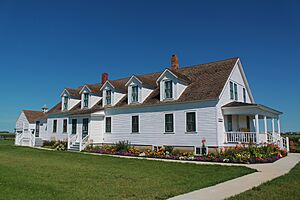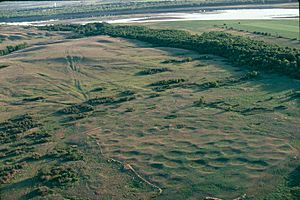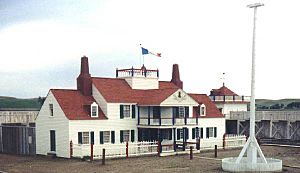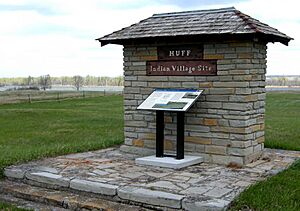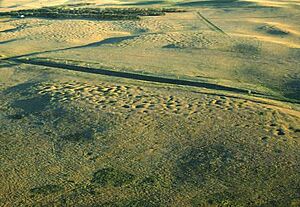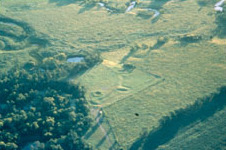List of National Historic Landmarks in North Dakota facts for kids
North Dakota is home to some really special places called National Historic Landmarks. These landmarks are chosen by the U.S. Federal Government because they are super important to the history of the United States. Think of them as historical treasures!
There are 7 of these amazing landmarks in North Dakota. They help us learn about the past, from old Native American villages to early farms and trading posts.
Contents
North Dakota's Historic Treasures
These are the cool places in North Dakota that have been named National Historic Landmarks. Each one tells a unique story about the state's past.
Frederick A. and Sophia Bagg Bonanza Farm
This farm, located near Mooreton, is a preserved "bonanza farm." A bonanza farm was a very large farm, often thousands of acres, that grew a single crop like wheat. These farms were common in the late 1800s and early 1900s. They used new machines and methods to farm on a huge scale. The Bagg Bonanza Farm shows us what these massive farming operations were like.
Biesterfeldt Site
Near Lisbon, the Biesterfeldt Site is an important archaeological spot. It helps experts learn about the people who lived in this area long ago. Even without a picture, this site holds many secrets about early life in North Dakota.
Big Hidatsa Village Site
The Big Hidatsa Village Site is near Stanton. It's the largest of three villages found at the Knife River Indian Villages National Historic Site. This site was once a thriving village of the Hidatsa people, a Native American tribe. It gives us clues about how they lived, farmed, and built their homes centuries ago.
Fort Union Trading Post
Located near Williston, the Fort Union Trading Post was a very important place for trading furs. It was one of the biggest trading posts on the upper Missouri River until 1867. Many famous people visited this fort, including artists like George Catlin and Karl Bodmer, explorers, and Native American leaders like Sitting Bull. It was a busy hub where different cultures met and traded.
Huff Archeological Site
The Huff Archeological Site is near Huff. It was once a fortified village of the Mandan people, another Native American tribe. This village was built on the bank of Lake Oahe. Today, it's an Archaeological site and a state park that you can visit. It helps us understand how the Mandan people lived and protected their communities.
Lynch Knife River Flint Quarry
This quarry is located near Dunn Center. It's a special place where Native Americans mined "Knife River Flint." This type of flint was very important because it was used to make sharp tools and weapons. People traveled from far away to get this high-quality stone. The quarry shows us how important natural resources were to ancient cultures.
Menoken Indian Village Site
The Menoken Indian Village Site is near Bismarck. It's the location of a village that existed in the 13th century, which means it's about 800 years old! Like the Huff site, this is now a state park. It helps us learn about the early inhabitants of North Dakota and how they organized their communities.


